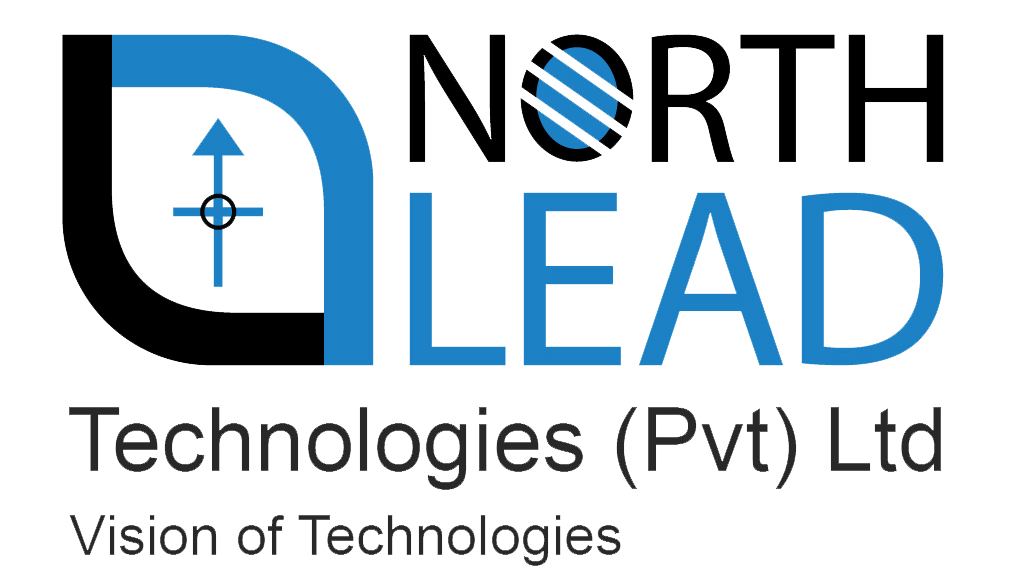Content
Also, CPaaS and hardware and software specifications are specifically designed to support communications applications. These applications and their usage are much more sensitive to jitter, latency and packet losses. Hosted PBX, cellular networks, (near real-time) applications typically are deployed on CPaaS platforms. Infrastructure as a Service , Platform as a Service , and Software as Service are the three main categories of cloud computingservice models.
Procurement as a Service (PaaS) Market Growth Opportunity 2022 Key Dynamics, Latest Trends, CAGR Status, Industry Revenue, Leading Players with Industry Segments Forecast to 2025 – Digital Journal
Procurement as a Service (PaaS) Market Growth Opportunity 2022 Key Dynamics, Latest Trends, CAGR Status, Industry Revenue, Leading Players with Industry Segments Forecast to 2025.
Posted: Tue, 15 Nov 2022 10:04:35 GMT [source]
Web App and API Protection Threat and fraud protection for your web applications and APIs. High Performance Computing Compute, storage, and networking options to support any workload. Database Migration Guides and tools to simplify your database migration life cycle. CAMP Program that uses DORA to improve your software delivery capabilities. Productivity and collaboration Connect your teams with AI-powered apps. Red Hat OpenShift’s PaaS offerings include Red Hat OpenShift Service on AWS, Microsoft Azure Red Hat OpenShift, and Red Hat OpenShift Dedicated.
IaaS Advantages
Government Data storage, AI, and analytics solutions for government agencies. Supply Chain and Logistics Digital supply chain solutions built in the cloud. Engagements with our strategic advisers who take a big-picture view of your organization, analyze your challenges, and help you overcome them with comprehensive, cost-effective solutions. A platform that virtualizes hardware and organizes those resources into clouds.
If your PaaS provider makes updates and stops supporting certain functionalities, that could also pose issues. Say your team programs in a certain language, and a PaaS provider deploys an update that no longer supports that language. Your team would need to completely change all of their code, or even learn a new language. PaaS, IaaS, and SaaS often work together—but have separate functionalities. Overall, PaaS is a good choice for delivering highly customized, modern apps that drive business innovation or customer engagement. With many VMware ESXi servers reaching end of life, users must decide to extend existing support agreements, upgrade to version 7…

The vendor handles everything else, from maintaining the server hardware and software to managing user access and security, storing and managing data, implementing upgrades and patches and more. With Platform as a Service, a third-party service provider offers the application stack and integrates operating systems, middleware, for instance, databases, servers, and runtimes, into a cloud environment. Google App Engine and AWS Elastic Beanstalk are top-tier PaaS products on the market today.
How does PaaS work?
As an example, the VMware Tanzu Application Platform is expected to provide a suite of highly integrated Kubernetes-based application deployment and infrastructure management tools. This should enable VMware’s cloud-native IT automation products to integrate with the Kubernetes container orchestration platform. It will offer a comprehensive workflow for developers to build apps quickly and test on Kubernetes. Google Cloud Runis a serverless, fully managed PaaS solution for container-based development that gives development teams an easy place to build and run highly scalable containerized applications. With Cloud Run, developers don’t need to know anything about how to start, scale, or manage container infrastructure—the PaaS takes care of it all.
For each of these, we’ll look at the concept, benefits, and variances. We’ll also help you understand the key differences among SaaS, PaaS, and IaaS—so you can best choose one for your organization. There are obviously specific signs for many words available in sign language that are more appropriate for daily usage. SaaS, Paas, IaaS are not mutually exclusive; most organizations use more than one, and many larger organizations today use all three, often in combination with traditional IT. Some SaaS vendors even enable customization of their product by providing a companion PaaS solution. Latency and performance issues might occur if you access the software from far-off distances.
Vision AI Custom and pre-trained models to detect emotion, text, and more. Cloud SQL Relational database service for MySQL, PostgreSQL and SQL Server. Startup Program Get financial, business, and technical support to take your startup to the next level.
Common examples of SaaS, PaaS, & IaaS
PaaS is a cloud computing service that uses virtualization to offer an application-development platform to developers or organizations. This platform includes computing, memory, storage, database and other app development services. PaaS solutions can be used to develop software for internal use or offered for sale. You simply tap into the cloud service provider’s PaaS to begin provisioning resources and developing immediately.
- The complexity of connecting the data stored within an onsite data center or off-premise cloud is increased, which may affect which apps and services can be adopted with the PaaS offering.
- PaaS allows businesses to design and create applications that are built into the PaaS with special software components.
- Insider threat or system vulnerabilities may expose data communication between the host infrastructure and VMs to unauthorized entities.
- Examples of PaaS solutions include AWS Elastic Beanstalk, Google App Engine, Microsoft Windows Azure, and Red Hat OpenShift on IBM Cloud.
- AI Solutions Add intelligence and efficiency to your business with AI and machine learning.
- Control of PaaS is sometimes a matter of perspective and is typically a shared responsibility between providers and users.
The latest vSphere release offers expanded lifecycle management features, data processing unit hardware support and management … PaaS expansion and growth are also being driven by cloud migration and cloud-first or cloud-native application development efforts in concert with other emerging cloud technologies, such as IoT. For all practical purposes, PaaS is a third-party resource — a business partner — upon which the user’s business depends.
This article presents a comprehensive view of PaaS in cloud computing, including what is PaaS, PaaS definition, PaaS architecture, benefits of PaaS, and PaaS examples. Additionally, large companies often need specialized facilities to house their data centers and a team to maintain them. Enormous amounts of electricity also are needed to power the servers as well as the systems to keep them cool. Finally, a failover site is needed to mirror the data center so information can be replicated in case of a disaster. The scope, features, functionality and performance of each PaaS product can vary dramatically.
Modernize your applications for interoperability and ROI
SaaSis application software you use via the cloud, as if it were installed on your computer . Additional resources and training may be required for the workforce to learn how to effectively manage the infrastructure. Customers will be responsible for data security, backup, and business continuity.
And the great thing about it is that you don’t have to be an IT expert or software engineer to install and use the SaaS app on each computer. Many of these apps directly run on a web browser, which means you only need a computer, a browser, and an internet connection to access them. PaaS is a mechanism in which the service provider deploys, hosts, and executes the application for the developers. But in the case of CaaS, the developers need to structurally define the space for the packaging and execution from the operating system’s point of view.
Infrastructure Modernization Migrate quickly with solutions for SAP, VMware, Windows, Oracle, and other workloads. AI Solutions Add intelligence and efficiency to your business with AI and machine learning. New Business Channels Using APIs Attract and empower an ecosystem of developers and https://globalcloudteam.com/ partners. APIs and Applications Speed up the pace of innovation without coding, using APIs, apps, and automation. Document AI Document processing and data capture automated at scale. Artificial Intelligence Add intelligence and efficiency to your business with AI and machine learning.
What are managed IT services?
Google App Engine supports distributed web applications using Java, Python, PHP and Go. Red Hat OpenShift is a PaaS offering for creating open source applications using a wide variety of languages, databases and components. The Heroku PaaS offers Unix-style container computing instances that run processes in isolated environments while supporting languages such as Ruby, Python, Java, Scala, Clojure and Node.js. Companies often use mPaaS for the creation of applications that will provide both internal and customer-facing uses.

PaaS in cloud computing is ideally suited for software-related product development. It is purely a development-oriented cloud computing model that cannot accommodate non-development processes, unlike other cloud solutions such as IaaS and SaaS, which serve various purposes. AWS Elastic Beanstalk enables users to create, deploy and scale web applications and services developed with Java, .NET, PHP, Node.js, Python, Ruby, Go and Docker on common servers, such as Apache, Nginx, Passenger and IIS. Microsoft Azure supports application development in .NET, Node.js, PHP, Python, Java and Ruby, and enables developers to use software developer kits and Azure DevOps to create and deploy applications.
When to Use SaaS?
With PaaS, businesses don’t have to create their own infrastructure or servers. They’re able to use the development tools within the PaaS to create pros and cons of paas software or develop mobile applications and websites. One way to make working in the cloud more efficient is to use a platform as a service .
In terms of disadvantages, however, service availability or resilience can be a concern with PaaS. If a provider experiences a service outage or other infrastructure disruption, this can adversely affect customers and result in costly lapses of productivity. However, PaaS providers will normally offer and support relatively high uptimes — though availability is governed by the provider’s service-level agreement . Both models provide access to services often based in a cloud, so it’s worth drawing the distinction between platforms and software. With PaaS, the provider is responsible for securing the infrastructure. Most major PaaS service providers also offer guidelines and best practices for building on their platforms.
Chronicle SOAR Playbook automation, case management, and integrated threat intelligence. Cloud Data Loss Prevention Sensitive data inspection, classification, and redaction platform. Intelligent Operations Tools for easily optimizing performance, security, and cost.
The Salesforce Platform brings together the power of no-code builders and pro-code tools in a single PaaS.
Users pay a monthly or annual fee to use a complete application from within a web browser, desktop client or mobile app. The application and all of the infrastructure required to deliver it – servers, storage, networking, middleware, application software, data storage – are hosted and managed by the SaaS vendor. PaaS is highly available and highly scalable, and it gives organizations the ability to build and create new services and solutions without the need for highly skilled developers focused on software maintenance. A private PaaS uses its own infrastructure and a private cloud that’s managed by an organization’s IT department. It’s much more secure, which is why enterprise companies tend to choose private PaaS over public.
Watch live keynotes, access on-demand learning sessions, exclusive Oracle TV live programming, and AI-powered digital networking. Access on-demand content from October 18 through November 18, 2022.







